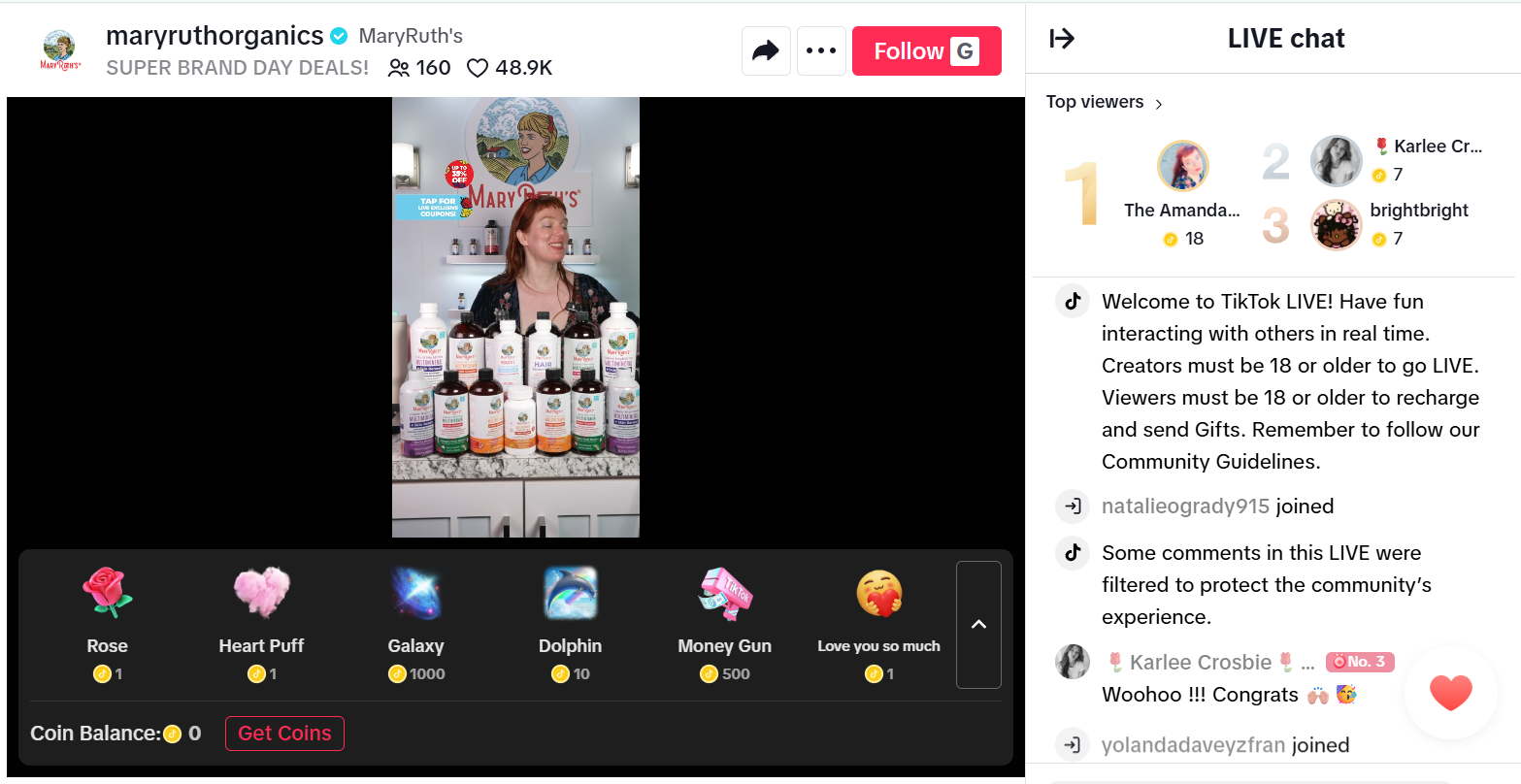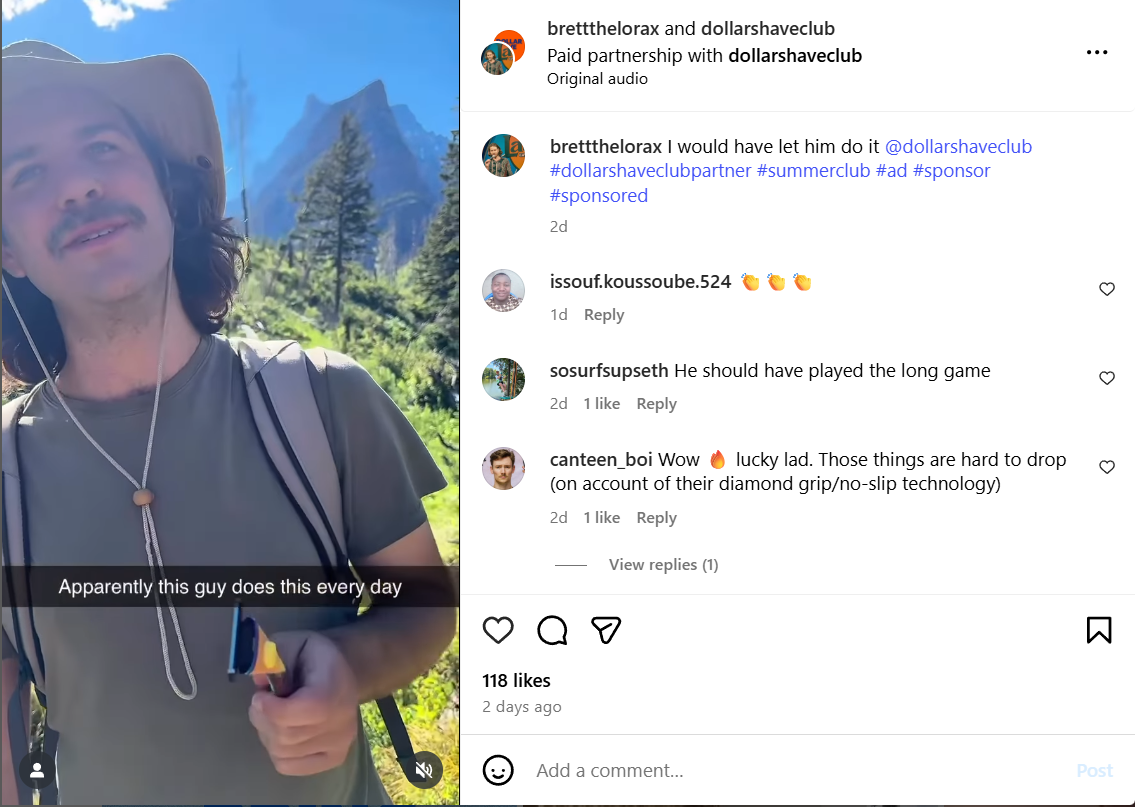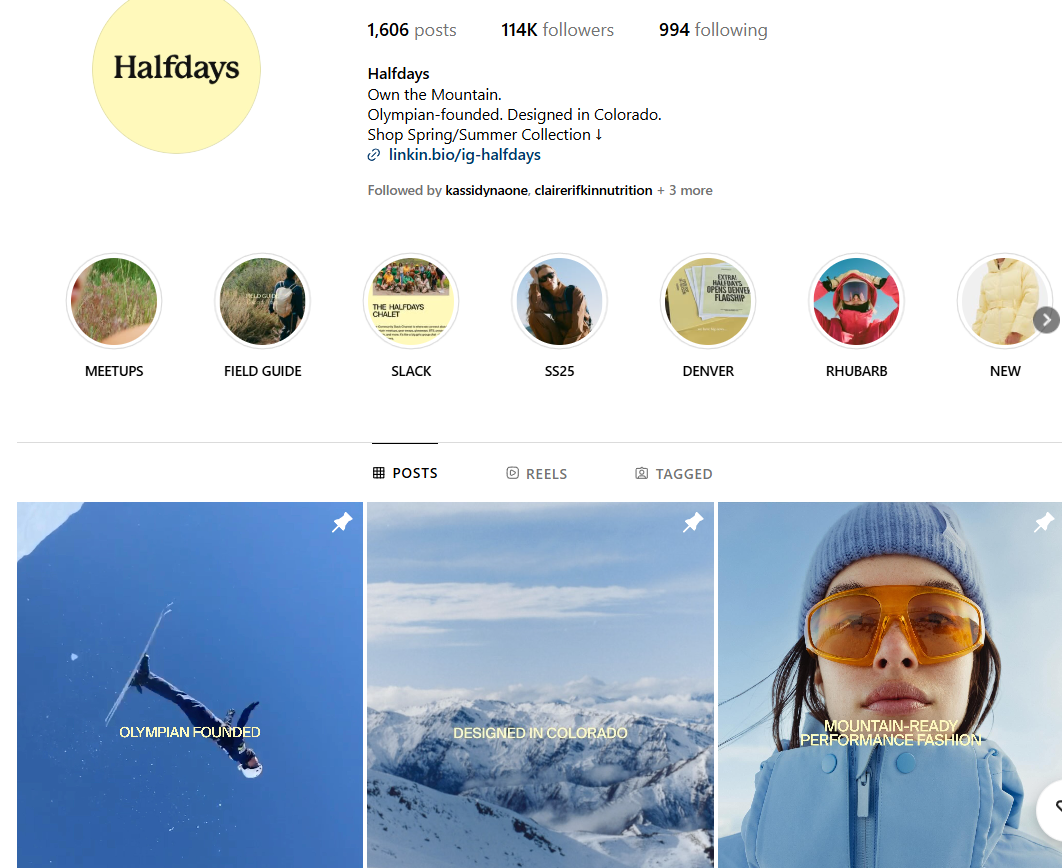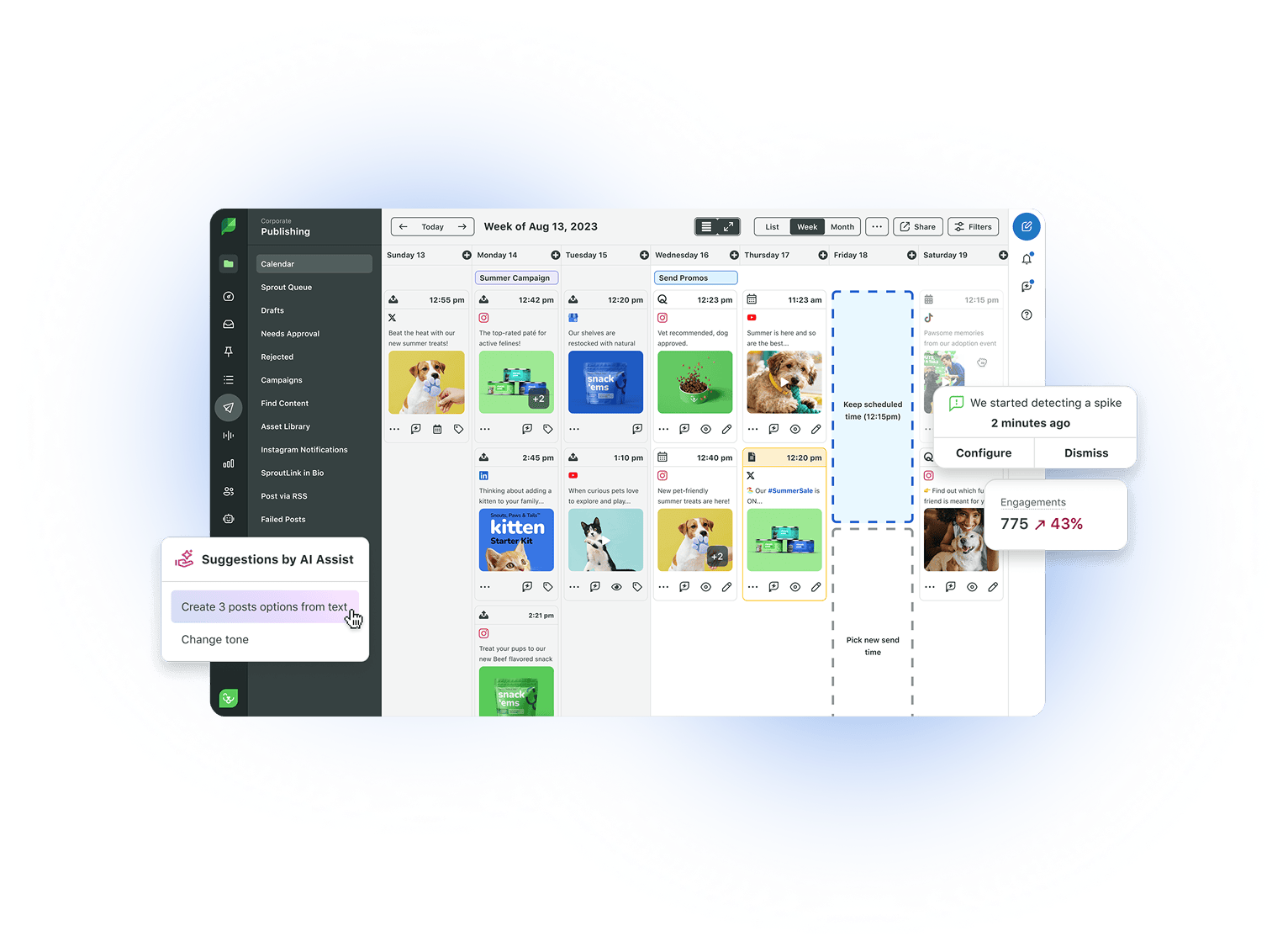Direct to consumer marketing: Elevating your strategy with social media

Table of Contents
Direct-to-consumer (DTC) marketing has evolved from a disruptor model into a standard go-to-market strategy. By selling directly to customers, brands gain more control over their margins, customer data and long-term relationships.
But the appeal of DTC goes beyond cutting out the middleman—it’s about meeting rising consumer expectations. Today’s shoppers want more than transactions. They look for personalized, meaningful interactions that make them feel understood and valued.
That’s where social media plays a pivotal role. Direct to consumer marketing success depends on strong customer relationships, and social is where those happen in real time. In this article, we explore the marketing strategies fueling DTC growth—and how social media helps brands stand out, stay connected and scale impact.
What is DTC marketing
DTC marketing encompasses strategies that draw a straight line between brands and consumers. Instead of depending on shelf space or in-store promotion, DTC brands take control of the entire customer journey, from awareness to conversion to loyalty.
This model allows brands to build closer relationships with their audiences and tailor every interaction, from ads and content to post-purchase support. Traditional Consumer Packaged Goods (CPG) brands might rely on retailers to drive foot traffic. DTC brands meet customers where they are and create personalized, brand-owned experiences.
Social media plays a central role in that experience, giving brands new “owned” channels to expand their presence, make sales and foster community. Instead of seeking out a website, consumers can interact with DTC brands without leaving the platforms they’re already using.
The pivotal role of social media in direct-to-consumer marketing
Social media is no longer just a marketing channel for DTC brands. It’s become a foundational ecosystem for product discovery, consumer engagement, conversion and retention.
In a Q4 2024 Sprout Social Pulse Survey, 89% of respondents said a brand’s social media content impacts their purchasing decisions. Additionally, The Sprout Social Index™ found that most consumers begin interacting with brands on social media one to six months before making a purchase. The same report also spotlighted that personalized customer service is customers’ top priority on social.
Once a purchase is made, consumers turn back to social media to address any issues or concerns. If your service approach doesn’t live up to the quick and personalized standards consumers expect, you may lose them as a customer. In the Q2 2025 Sprout Social Pulse Survey, 49% of consumers said if a brand was unresponsive to them on social media, they might try reaching out on another platform, but 19% said they never would. Your DTC social media strategy can have major impacts for all areas of your business.
Social media and product discovery
Social media is a discovery engine. Ads, influencer content, posts from individual users and brand content can all appear in the results of a social media search to help users find what they need. Social media content from networks like YouTube, Reddit and Instagram also impacts traditional SEO, so even consumers using Google to search can be influenced by social posts about your brand.
Specialized algorithms learn what individual users like and can serve up content featuring products that seem tailor made for them. This exposure via social media is directly connected to sales: 76% of consumers in a Q2 2025 Sprout Social Pulse Survey said social media content has influenced some percentage of their purchase decisions in the last six months.
Influencer marketing’s role in DTC
Influencers carefully curate their content, sharing product recommendations that align with their aesthetic and lifestyle.
The best influencers partner with brands they genuinely use, building authentic relationships with their audience—who, in turn, look to them for trusted recommendations. Some 64% of respondents in our Q2 2025 Pulse Survey say that a brand partnering with an influencer they like makes them more willing to buy from that brand.
Influencer marketing can help DTC brands get a foot in the door with a pre-built, excited audience.
Social customer care as a loyalty lever
Social customer care is the linchpin between a one time purchase and long-term brand loyalty. For DTC brands, meeting people where they already spend their time—on social media—makes support more accessible and more personal.
Consumers expect to see brands where they are too, and they want companies to be available. Nearly three-quarters of those surveyed in The Sprout Social Index expect a response to their customer service needs within 24 hours or less.
If you rise to meet these expectations in your customer care approach while offering a personalized, empathetic experience, you can create lifelong customers who will come back to your offerings again and again.
The emergence of live shopping
As online shopping continues to evolve, younger generations seem to be reviving the QVC model their grandparents and parents enjoyed via live shopping.
In an old-school yet brand-new approach to social commerce, consumers are hopping on live streams on TikTok, Twitch, YouTube and other platforms to watch product demos, learn about items, hear reviews and ask questions in real time. Viewers can ask about their specific needs and how a product could work for them, from sizing questions to supplement guidance, with answers delivered by fun and engaging hosts.
Key social media strategies for DTC marketing success
To realize the benefits of DTC marketing, you’ll need a thoughtful strategy that engages your audience and incorporates trends. Here are some key points to consider and include in your approach.
Choose influencer partnerships based on topical alignment
Given the role influencers play in shaping trends across platforms and the pull they have in audience opinion, finding the right influencers is crucial to DTC success. Influencers you partner with should be a match for your company’s values and speak to your target audience’s interests. They should be someone your potential customers can relate to and connect with. Algorithms drive what content is suggested to social media users, curated for their interests and past social activity. Keep this in mind as you select influencer partners for campaigns. Does their content match what your audience is searching for and interacting with?
Finding partners that align topically to your brand is easier with influencer marketing platforms. Sprout Social Influencer Marketing helps DTC marketing teams discover and engage with influencers that fit your brand best with features like the Brand Fit Score. The Brand Safety Reports help you pre-qualify potential influencers and feel confident that the partnership won’t compromise your brand values.
Personalize social customer care
The two most critical elements of customer care are speed and personalization. Responses to inquiries should happen within one day if at all possible, and messages should be customized for the individual reaching out. Customers feel cared for when it’s clear a response was crafted for them and the person sending it wants to help.
Social Customer Care by Sprout Social supports your efforts in nailing quality customer care. In addition to helping your team answer messages quickly and efficiently, Sprout gives you insight into metrics like average handle time so you can measure your team’s performance and ROI.
Use live shopping integrations to streamline social commerce
Live shopping events are a fun and engaging way to boost business and build consumer relationships at the same time. Depending on your capabilities, it can be as simple as setting up a tripod, building out your TikTok shop and going live.
However, integrating with platforms like Facebook Shops and Shopify can elevate your consumers’ social media commerce experience. This can open more opportunities for purchasing and streamline sales. Sprout Social has social commerce integrations that optimize your selling process across platforms and help customers buy from you in just a few clicks.
Build community and promote user-generated content
Creating a social media community can take your DTC strategy to another level. Encourage your customers to share their experiences with your products and services. User-generated content (UGC) is often more authentic than general marketing collateral, plus it builds personal brand connection with the individuals who share it.
Reshare posts and videos, use UGC in ads (with permission) and interact with posts your brand is tagged in. Nurturing community in this way can turn brand loyalists into true brand advocates.
Jump on viral trends
A well-timed meme can solidify your brand as one that “gets it.”
According to the Sprout Social Index, 93% of consumers say it’s important for brands to keep up with online culture. That means knowing what’s trending, from the funny to the bizarre, and creating relevant content where it makes sense. Some 40% of social media users think it’s cool when brands jump on trends (though Gen Z is more likely to think so than older generations). To meme correctly, make sure you understand the culture around a trend and how it’s being used before posting.
Use social listening and AI insights to understand your audience
DTC marketing strategies are most successful when they’re backed by data. Luckily, social media is a wealth of insight about your audience. You can gain a deeper understanding of their wants, needs and concerns surrounding your brand or specific topics to inform your DTC marketing approach.
AI-powered tools like Sprout Social Listening can be an ally in this process to assist in sorting through reams of data to uncover what really matters. Social Listening keeps your ear to the ground, compiling details on discussions about your brand and relevant trends. Features like sentiment analysis will show you patterns in how customers are feeling about your content and products. Armed with this knowledge, you can tailor content, offers and recommendations for your social media audiences.
Invest in paid social for audience growth and retargeting
For the best reach, DTC marketing strategies can implement a hybrid approach to social media that taps the benefits of both organic and paid social.
Paid ads can complement your overall strategy exposing your brand to new audiences. Social media advertising can also play a role in influencer campaigns while maintaining the approachable feel of organic content.
Paid posts are also useful for retargeting consumers who’ve interacted with your content before, but maybe haven’t made a purchase yet. If they’ve looked at a product on your website but not purchased, seeing that item again in their social feed via an ad might be the nudge they need.
Examples of brands using social media to elevate direct to consumer marketing
Who doesn’t love inspiration to develop your own strategy? Here are a few brands with stand out DTC marketing content.
MaryRuth’s Organics
MaryRuth’s Organics offers a line of natural, vegan supplements for a variety of health purposes. Though their branding has an old school charm, they lean fully into the social media communities of today.
With well over a million followers on TikTok, MaryRuth’s hosts daily live shopping events where followers can learn about the supplements from live hosts. These hosts engage with viewers in real time, answering questions about finding the right supplements for them. There’s often a small celebration when someone places an order, along with special promotions and sales available only during the live stream.
Dollar Shave Club
By bringing humor and simplicity to their subscription service, Dollar Shave Club has made a mundane personal hygiene task into an engaging social media topic.
A subscription service can have a natural community feel, bringing together social media users who all see the same logo once a month in their mailbox. Dollar Shave Club streamlines shopping for Instagram users by including a “Shop Our Feed” link in the page’s bio.
Their Instagram presence also leans on UGC-style content via influencer partnerships with comedians and WWE stars. In this example, comedian Brett Dodenhoff ties in his Dollar Shave Club razor in a humorous skit.
Halfdays
Founded by an Olympian, Halfdays is an activewear brand for women who love mountain-related activities like skiing and hiking. Their audience is professional and athletic, the type of person who might take a “half day” to hit the slopes early.
The brand’s social media presence is based around community, mixing UGC and approachable brand photography. They also take a unique approach to cultivating community and discussion through their free Slack channel. The platform is a great fit for women who likely already use the app in a corporate setting, and the group boasts over 4,000 members.
Social is the heartbeat of direct to consumer marketing
Social media platforms are the home base for brands that know what it means to be customer-obsessed. From responsive customer care teams to engaging live shopping experiences, DTC brands are continuing to redefine what exceptional marketing looks like.
DTC brands are now learning to navigate the attention economy in an increasingly crowded and noisy social media landscape. Read more about why and how brands can cut through the clutter with Sprout Social CMO Scott Morris’ perspective on the attention economy.






Share